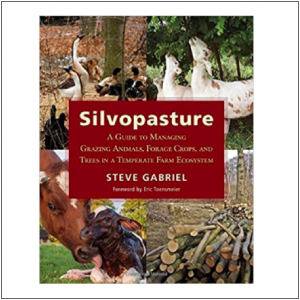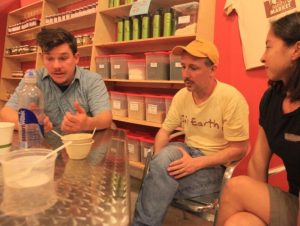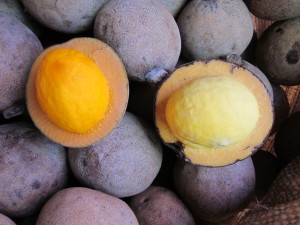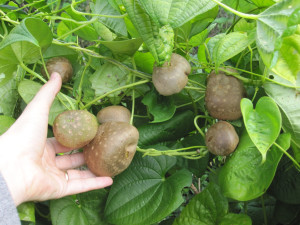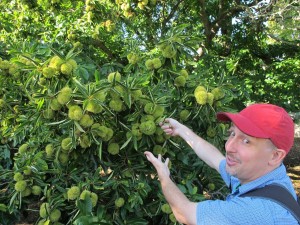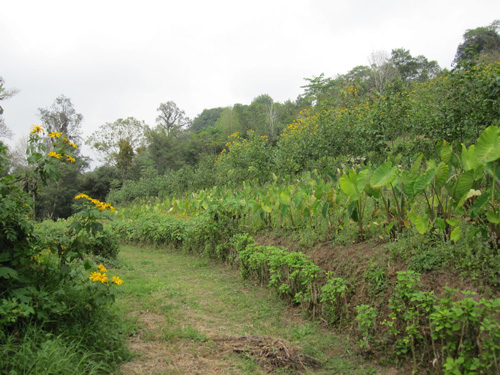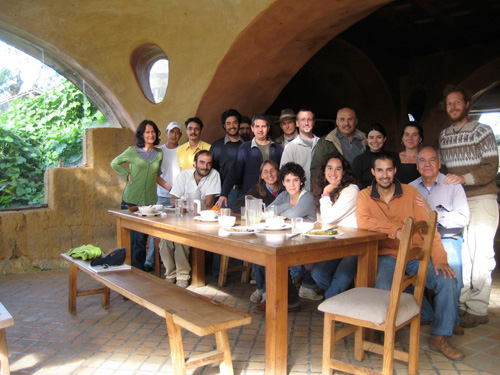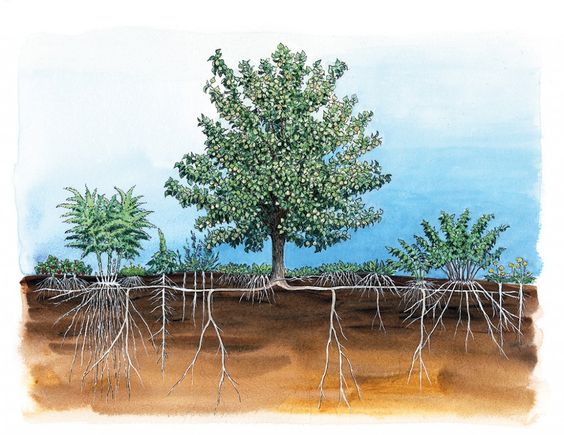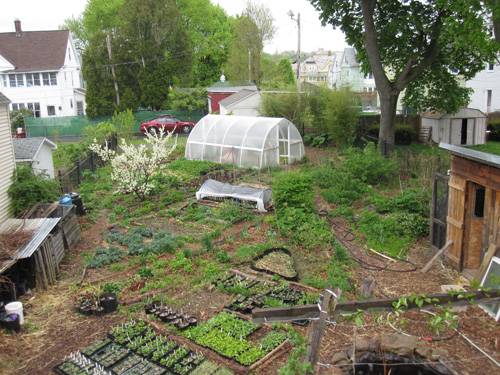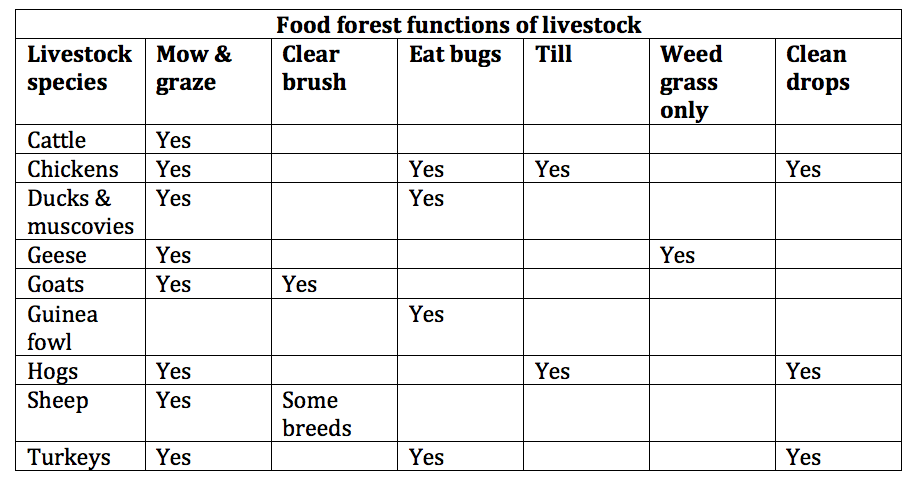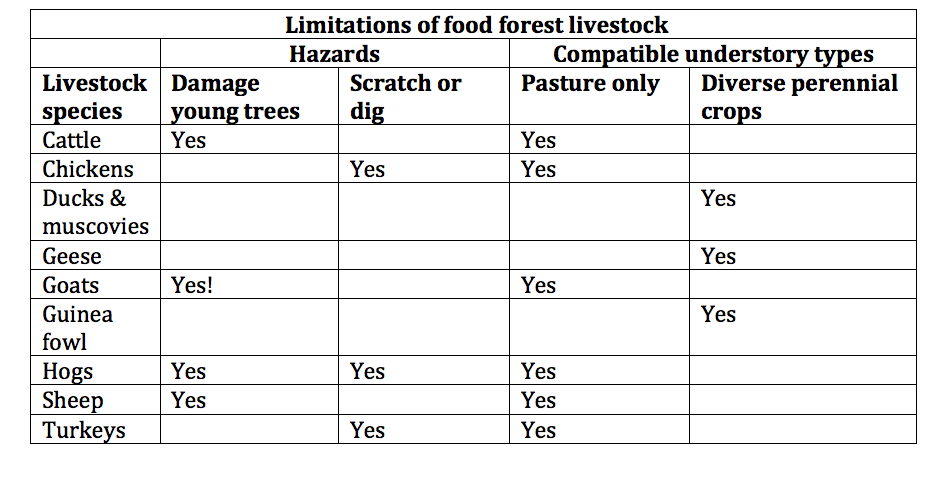Integrating livestock seems to be the best way to have a larger-scale food forest (anything over one hectare or a couple of acres). If done properly, livestock integration can greatly reduce labor and fossil fuel needs. It can create the conditions for happy and healthy livestock. Done poorly, it can ruin soils and destroy crops. Here are a few things that I’ve been learning as I travel around and view this aspect of permaculture in action (plus some important tidbits from reading).
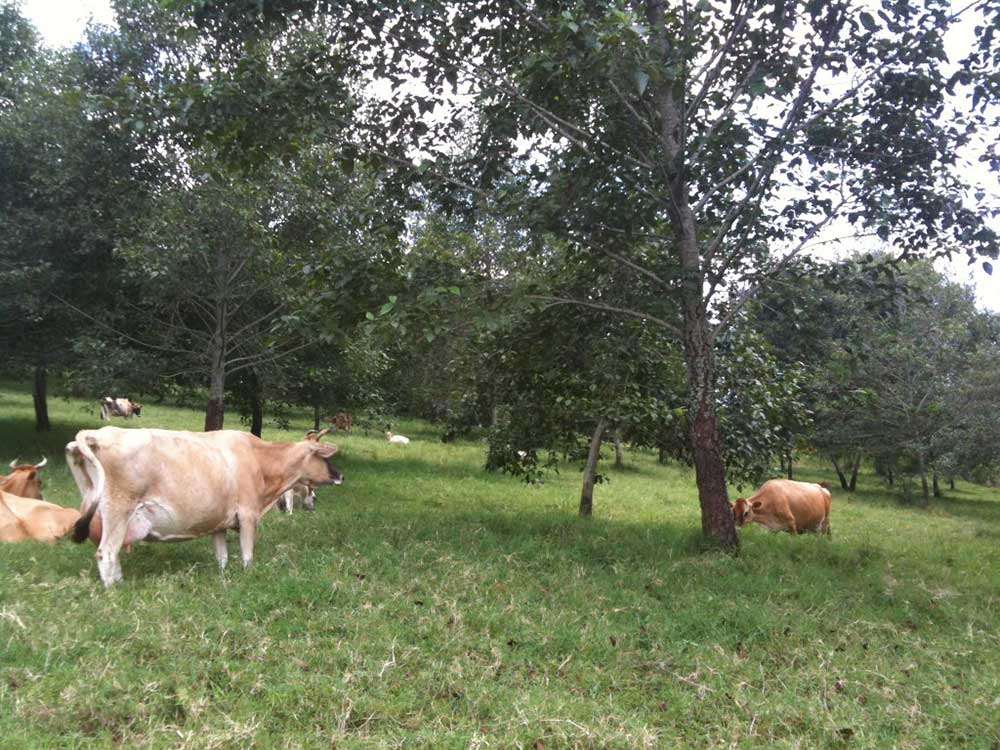
In this article I’ll review some of the more common kinds of livestock. I’m certainly interested in other animal species and would love to hear from people with experience raising things like meat iguanas, nutria, grasscutter rats and other interesting creatures. Note that differences between breeds and in the manner of raising and handling livestock can cause substantial variation as well.
There are several key functions that livestock can perform in food forests. These include site preparation, tillage, mowing and grazing, insect control, weeding, and picking up drops.
Livestock integration begins with site preparation. I have had excellent luck using portable fencing to move around goats for the purpose of clearing brush. They very effectively strip any leaves they can reach.
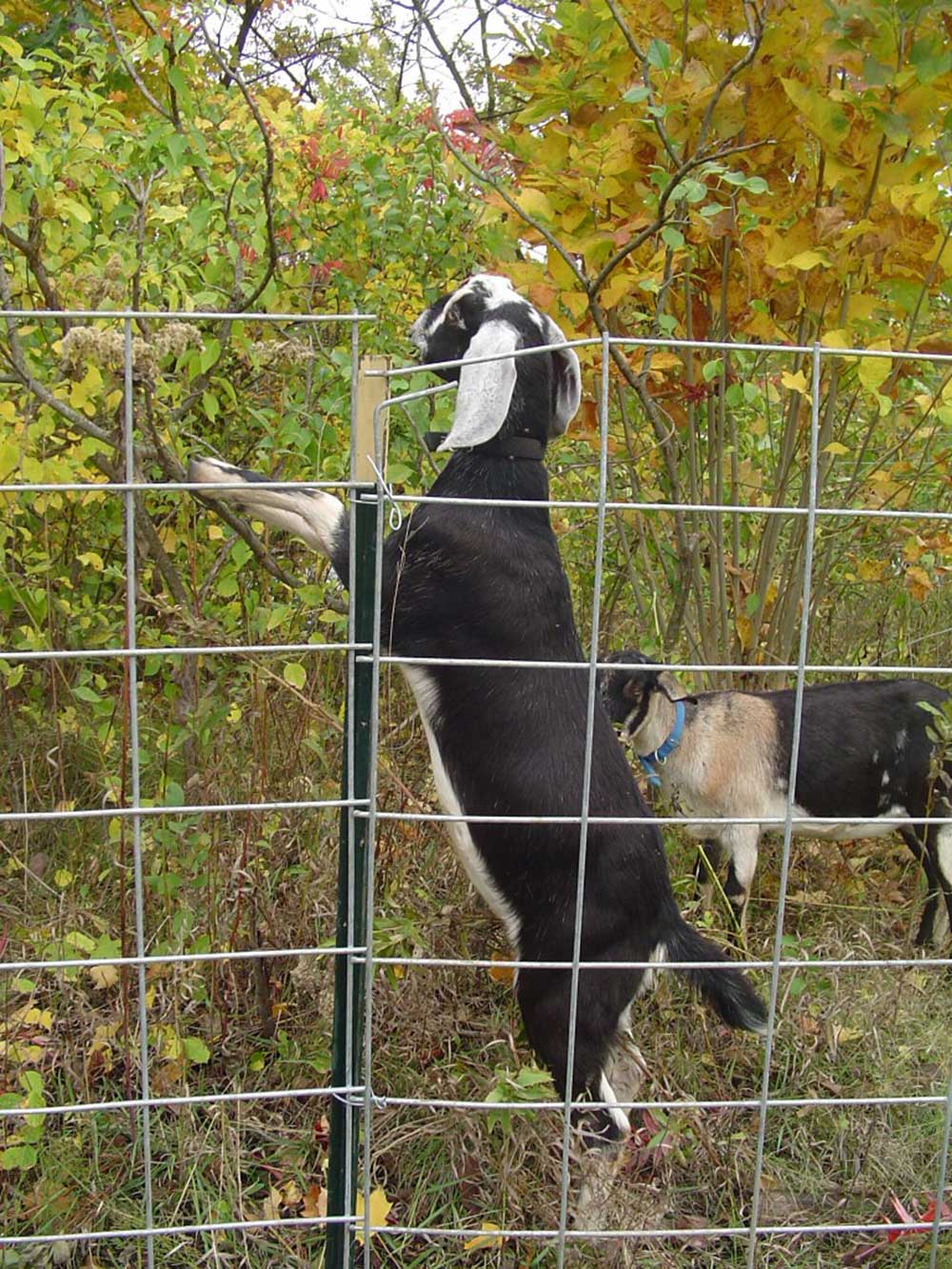
At that stage I add on a new piece of fencing and move them into new browse, while bringing pigs into the pen they were just him. The pigs root up the soil, serving as a very effective tiller. One could bring chickens in as well to dig for seeds and help to flatten out the craters left behind by the hogs.
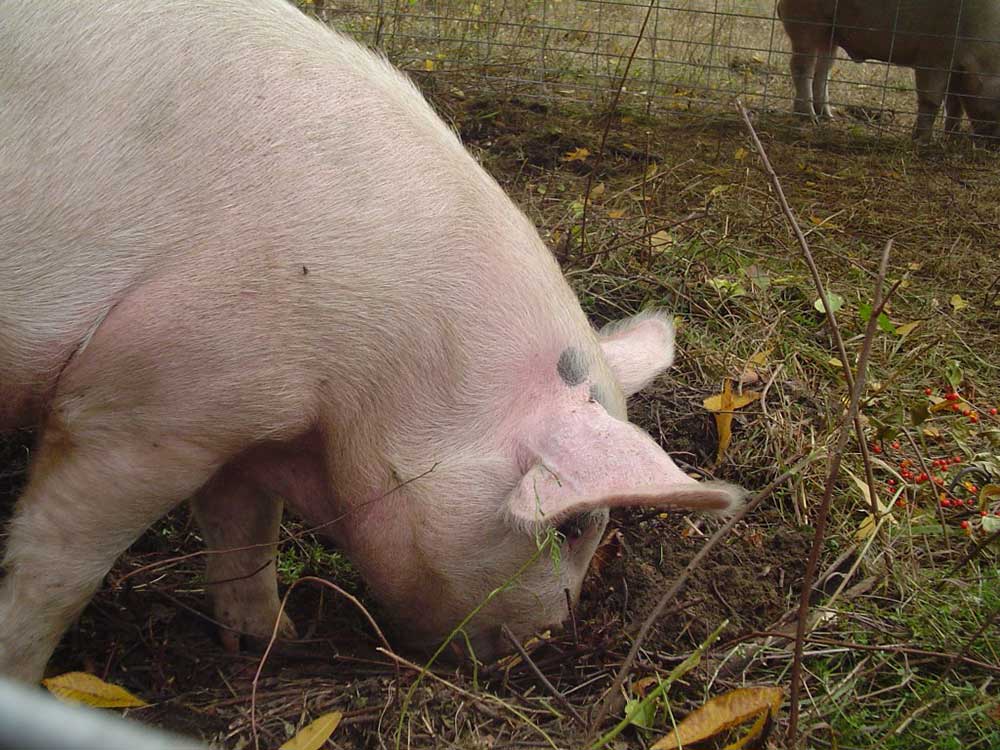
After clearing brush and tilling, many kinds of livestock can be used instead of mowing the understory of a large–scale food forest. It drives me a little crazy sometimes to see people mowing their orchards when sheep or chickens or some other species would be so happy to do it for them. Badgersett Research Corporation does this very effectively in the understory of their chestnut and hazel woody agriculture demonstrations.
Geese have a special role in managing the understory of a food forest. To my knowledge they are the only species of livestock which eat only grasses and clovers, while leaving other crops alone. My friends at Las Canadas in Huatusco, Mexico have used geese to get the incredibly weedy star grass under control beneath their woody plants. They began at ten geese per acre and after a year were able to reduce that to two per acre just to control the resprouting grass roots. Now they have planted a diverse understory of gingers, sweet potatoes, taro, and much more–all of which would’ve been impossible in the presence of star grass. The geese wander through these crops uninterested, hunting for a few shoots of grass for a tasty treat. The breed they are using is called African weeder although many other breeds are useful in this regard as well.
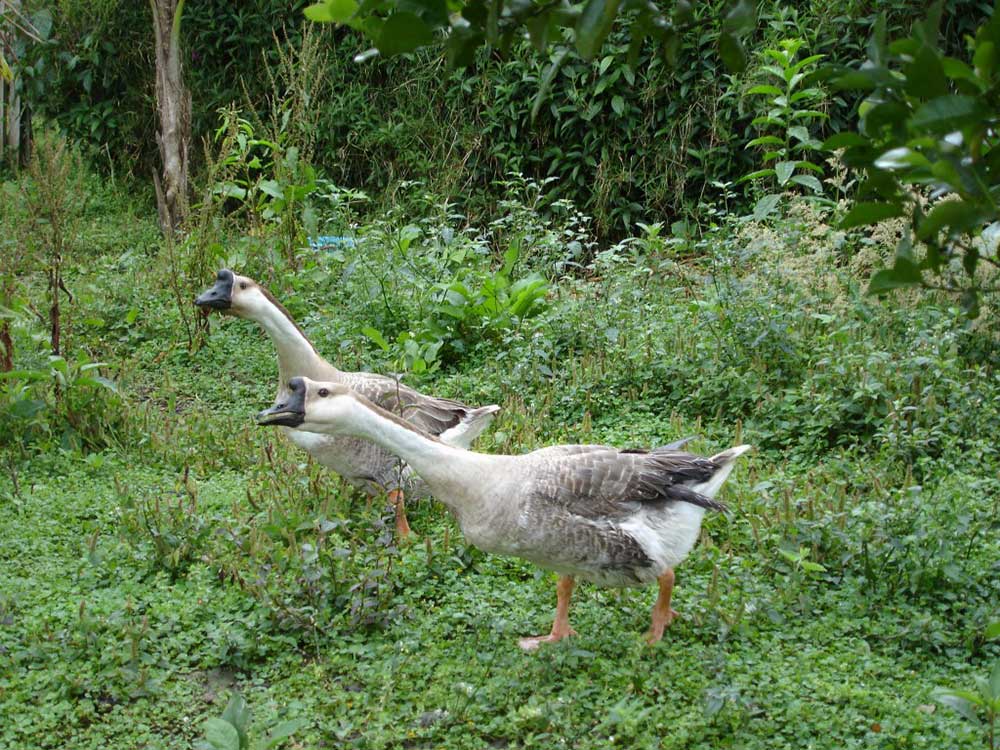
Several kinds of poultry can play an important role in eating pest insects. Chickens do a fine job hunting for insects, particularly the smaller and smarter bantam breeds. Ducks do a fine job as well, and are especially valuable of course for their ability to eat slugs and snails. Turkeys are said to be good insect hunters as well, at least the heritage breeds. Probably the finest insect hunter is the guinea hen. Adult guineas eat 90% insects and have the added bonus of not scratching, making them much superior to chickens in this regard.
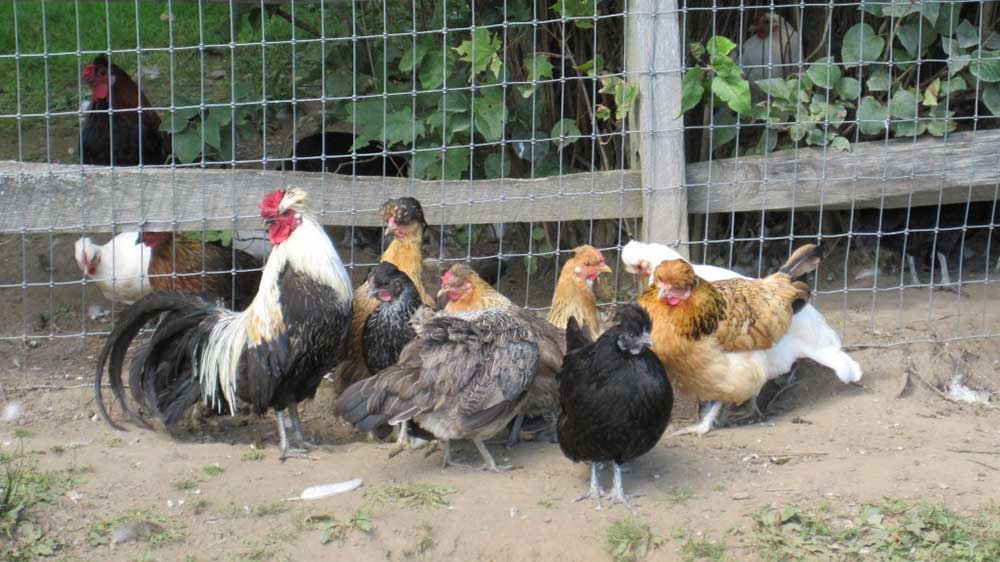
Another kind of pest control is picking up dropped fruits and nuts. Many diseases and insect pests overwinter or otherwise pass a part of their life cycle in these dropped fruits, or in the soil beneath them as they decompose. By running hogs, chickens, or turkeys at the right time you can break that link in the life cycle of the past and give your livestock a tasty protein bonus at the same time.
Unfortunately livestock integration is not without its difficulties. Many livestock will damage young trees, or scratch or dig in the understory. Few breeds of livestock are compatible with the fully diverse herbaceous understory.
Most larger species of livestock can damage young trees, whether by deliberately eating them were simply trampling them. If livestock are to be used during the establishment phase you’ll probably want tree tubes or some kind of fencing. Chickens, hogs, and to a lesser extent turkeys can cause serious damage in the understory by digging or scratching. This can mess up your mulch, kill understory crops, or otherwise limit your productivity. I’ve read some reports of livestock damaging irrigation equipment as well.
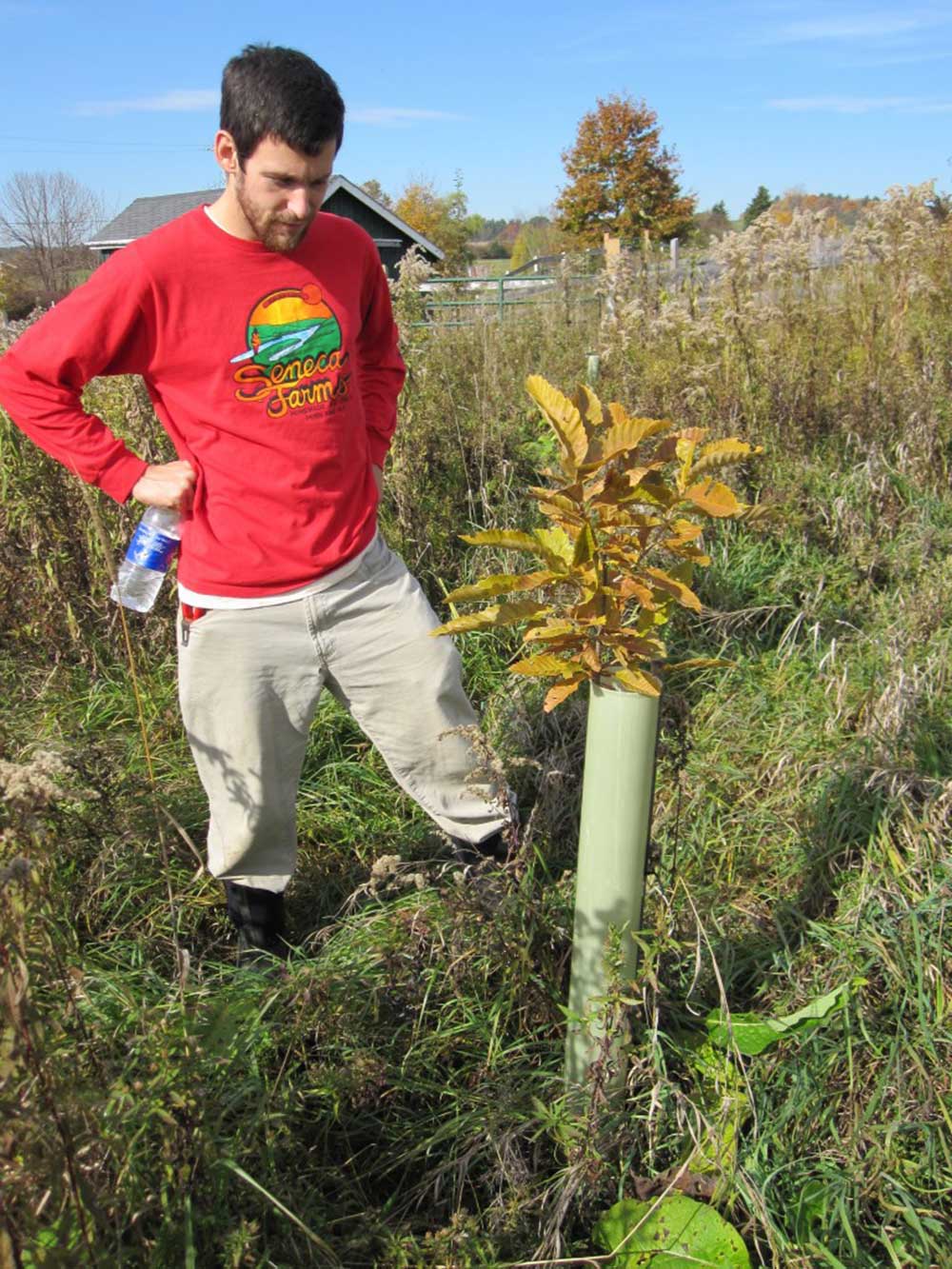
Almost all livestock species are compatible with a food forest understory if that takes the form of rotating them through pasture. Pasture could include comfrey, water celery, and a few other grazing- and trampling-tolerant crops, but not many species fall into this category. If you’d like a more diverse and productive understory on at least a smaller portion of a food forest (and don’t we all?), stick to geese, ducks, and guinea hens. The geese can control grassy weeds with minimal impact besides a bit of trampling on adjoining crops, while guineas will pick through the understory for insects while partaking in very little plant food. Ducks and muscovies are similar to guineas but eat a bit more leaves, but at least they don’t scratch.
Certainly using insects like honeybees, Maya stingless bees, or orchard mason bees to improve pollination is also an excellent idea. More broadly, you could consider livestock to be integrated with a food forest in the case of cut and carry operations that bring fodder to a pen and return manure to the orchard.
These are the broad categories of functions and challenges for livestock in food forests that I’ve observed thus far. Please share your experiences and observations.

